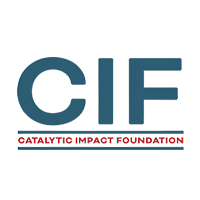Funding Forward: The Work Between First Proof and First Belief
The pilot worked. A clinician champion signed the letter. The method held outside the lab. Families finally have something to point to that isn’t a press release.
And then the questions arrive—not about hope, but about confidence:
Will a second site reproduce this signal with different staff and workflows?
Is the manufacturing process consistent enough to trust batch-to-batch?
Do our endpoints align with what a regulator or payer will accept?
Can we run a pragmatic study without breaking the clinic’s day?
This is where most health innovations wobble: early translation—after first proof, before the wider ecosystem believes. It’s the work between validation and adoption, the stage that traditional capital often overlooks and philanthropic capital rarely sustains.
It sits after the research grants and early philanthropy that fuel discovery, and before the private investment that accelerates commercialization. It’s the in-between space where momentum slows—not because the science falters, but because the funding structure does.
That’s the layer Funding Forward exists to name and navigate. This series is a resource for founders, funders, and operators working to close that invisible distance between first proof and first belief.
Where Teams Actually Get Stuck (It’s Not “Deployment”)
1. Pre-submission / pre-IND readiness.
The science is sound, but the endpoint strategy isn’t. When populations are small or workflows are novel, the first regulatory meeting hinges on whether your measures will hold up in the real world. Miss here, and you lose the year.
2. Second-site readiness (the invisible month).
A new site isn’t copy-and-paste. EHR build, SOPs, consent, and training all consume time and cash. Without that groundwork, “multi-site” remains a slide, not a study.
3. CMC / QMS for first real use.
In therapies and devices, manufacturing and quality systems are the product at this stage. Lock them early or pay the compounded cost later.
4. Evidence that travels.
A strong forest plot doesn’t convince a payer. You need pragmatic outcomes and basic HEOR that a hospital or insurer recognizes—even with a small sample.
5. Data rights & reuse.
If ownership and sharing aren’t defined up front, the study you run today can’t power the one you need next. You build a silo instead of a platform.
None of this is “go-to-market.” It’s the scaffolding that lets confidence accumulate.
What Money Is For at This Stage (and What It Isn’t)
Translation-stage capital shouldn’t inflate headcount or fund visibility campaigns. Its purpose is to retire named risks—the practical barriers that stand between a validated signal and a credible pathway to adoption.
Use it to:
Align endpoints and protocols for rare or novel settings.
Stand up site #2 (EHR integration, SOPs, consent workflows, training).
Finalize CMC/QMS to enable first-in-human or first-in-child readiness.
Run a pragmatic add-on (utilization, workflow time, dropout) alongside primary outcomes.
Build a minimal payer packet (comparators, cost signal, coding path) without over-claiming market readiness.
Philanthropy and grant funding rarely reach this point—they fund research, not readiness. Traditional capital typically waits for traction that depends on readiness being done. The result is a structural blind spot: a phase too late for early grants and too soon for growth equity.
Make the Next Ask Land… without sounding like everyone else
Anchor your request to a clear translation job, two irreversible milestones, and one decision date:
One job: “We’re funding site-2 readiness + pragmatic outcomes to turn signal into credible proof.”
Two milestones: “Go-live at week 10; three-metric outcomes readout at month 9.”
One decision date:
Decision Date – Month 10
If data ≥ threshold Y → file regulatory pre-submission or reimbursement code request.
If data < threshold Y → pivot to Plan X (refine protocol, adjust endpoint, or run a smaller study).
Clarity wins. Funders care less about how much you raise than what uncertainty you remove.
The Founder Self-Audit (Five Fast Truths)
One sentence, one risk. If you can’t name the single risk this funding retires, you’re not ready to raise it.
Irreversible milestones only. Busywork milestones burn trust; irreversible ones build momentum.
Three outcomes that matter: one clinical, one workflow, one cost/utilization. If you can’t measure them, you can’t scale them.
Named site #2. With a signed letter and a concrete EHR plan—no “TBD networks.”
Write toward your reviewer. Every figure and metric should be legible to the regulator or payer who decides what happens next.
Why This Middle Layer Matters
The middle isn’t empty—it’s just invisible to most investors.
Yet it’s where regulatory alignment, data credibility, and real-world feasibility are forged. Ignore it, and innovation slows not for scientific reasons but for structural ones. Funding Forward exists to make that work visible, fundable, and repeatable. It’s a blueprint for the bridge between research and readiness—the space where great ideas either stall or start to scale.
Build the scaffolding.
Set the decision date.
Retire one risk at a time.
That’s how ideas move from “it works” to “it reaches people.”

